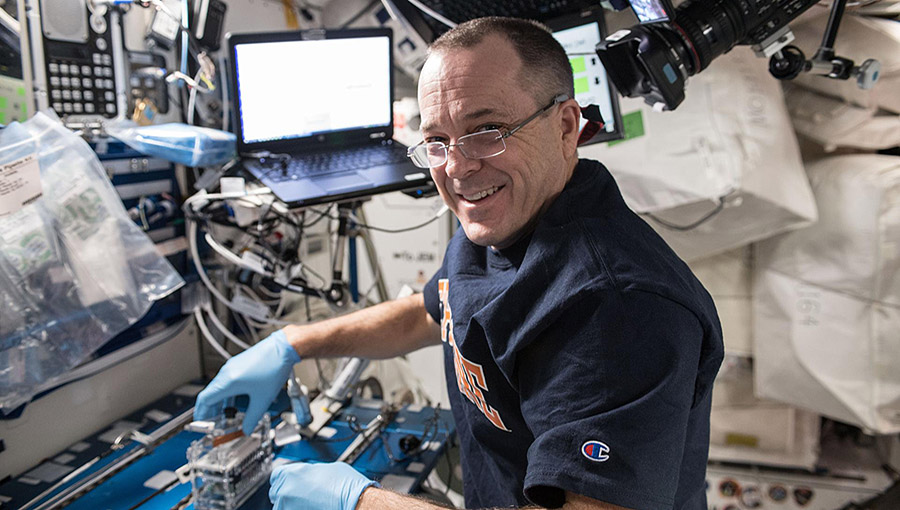Our Research
Why Study Animals in Space?
When humans travel in space the extreme environment causes loss of bone and muscle, immune system dysregulation, cardiovascular system changes and other health hazards.
By sending model organisms, such as fruit flies, nematode worms, and rodents into space, scientists can unravel the complex molecular changes that are triggered by stressors like microgravity, oxidative stress and space radiation. Understanding the underlying mechanisms is the first step to developing health countermeasures to protect astronaut health for future missions.
Animal Biology Missions
Growing Cells in Space
Understanding how cells respond to the pressures of space can tell us a lot about the role of gravity in the development and survival of living things.
By growing cells in culture in a specialized bioreactor to keep them alive in space, researchers can understand how the process of cell cycle arrest and stem cell differentiation are affected by microgravity, oxidative stress and radiation.
Cell Biology Missions
Do Microbes Survive in Space?
Everywhere humans travel, they take their microbes with them – including space!
Many people know that the International Space Station is a unique microgravity research laboratory in low-Earth orbit where astronauts conduct experiments in biology, physics, astronomy and other fields. However, the space station is also ideal for observing Earth microbes – single-cell organisms so tiny that millions can fit into the eye of a needle – in a new environment.
Microbiology Missions
Can Plants Grow in Space?
Plant biology missions help to address questions about whether plants that evolved on Earth can grow in space to support long-duration missions.
Humans will need to grow plants in space in order to support a healthy diet and improve the closed environment of a spacecraft. Water behaves very differently in space and creates challenges for root wetting. The kinds of light and growth media for plants to thrive in space are being tested through a continuous series of plant growth missions.
Plant Biology Missions

































